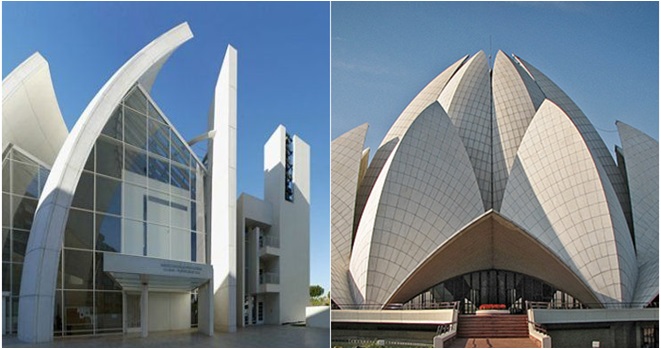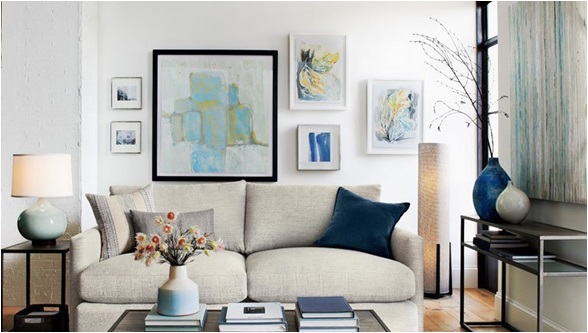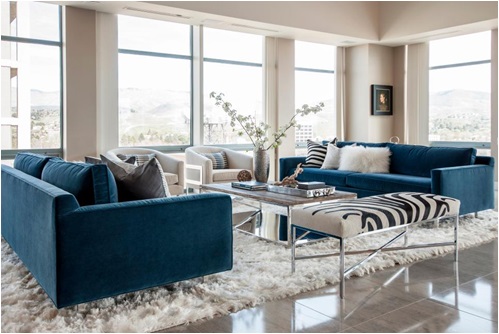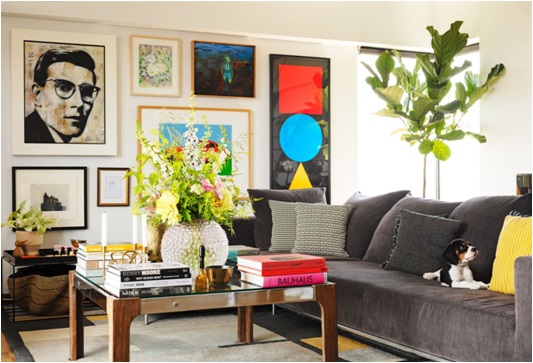
Principles of Interior Design
7 Principles Of Interior Design Explained
The principles of interior design are the core fundamental design concepts used by the interior design professionals to transform any space.
The interior designs are based on the fundamental design concepts that provide a framework to achieve the professional results.
These seven interior design principles are core fundamental principles. These principles of interior design are balance, rhythm, contrast , harmony and unity, emphasis, proportion and scale, and the principle of details.
- Principle Of Balance.
- Principle Of Rhythm.
- Principle Of Harmony And Unity.
- Principle Of Contrast.
- Principle Of Emphasis.
- Principle Of Proportion And scale.
- Principle Of Details.

The interior design is a science and also an art as well. The science of interior design is governed by its core fundamental design principles.
Whereas, the artistic dimension of the interior design provides the freedom of expression to the designers to incorporate various elements of an art into the design.
These design principles together provide a set of rules for the planning and designing the interior spaces.
Principles Of Interior Design
Table Of Contents
Principles Of Interior Design
Principle Of Balance
We as humans are programmed by Mother Nature to seek a balance or a state of equilibrium. We feel more confident and comfortable when walk on a plane level ground.
Similarly, we would feel more comfortable in an interior space that is perfectly balanced in terms of its composition.
The designer designs the interior spaces with various objects and elements. Each object and the element project a certain degree of visual weight.
A design composition is said to be perfectly balanced when the visual weight is well distributed between the various objects.
The interior designer has to properly select and manage the various design elements in order to achieve the state of balance.

The principle of balance helps the interior designer to establish an element of equilibrium.
The interior design incorporates several objects. Each object has its own visual appeal by virtue of its physical dimensions and other properties.
It is an important for the designer to establish a balance so that the overall interior design looks good and it is in equilibrium.
If the balance is not established, then the interior design tends to be dominated by few elements and the overall composition doesn’t look good.
Principles Of Interior Design
Types Of Balance In Interior Design
Symmetrical Balance
Also Referred As Formal Balance
A design is said to be symmetrically balanced when it creates an identical composition on either side of the axis of division. A symmetrical balance is also referred as formal balance.
The concept of symmetrical balance is one most common design concept incorporated in the architecture of many historical monuments.

Principles Of Interior Design
Asymmetrical Balance
Also Referred As Informal Balance
The design composition is said be asymmetrically balanced when it incorporates several elements of design with different dimensions and visual appeal on either side of the axis of division.
The asymmetrical balance is also alternately referred to as referred as informal balance. The element of asymmetry renders an informal character to the composition.
The asymmetry in the interior design is created when the visual weight of the various constituting elements are not distributed along the one side of the axis.

However, despite the intrinsic asymmetrical nature, the design composition still projects a sense of balance that is visually comfortable and presentable.
The asymmetrical balance also gives an element informal character to the design composition. Most people find the informal design equally comfortable and relaxed.
In case of asymmetrical balance, the overall design looks good despite the dimensional differences and the different visual appeal of the individual objects.
Radial Balance
A design composition is said to be in the state of radial balance when the elements are organized in radial pattern around the central object.
The concept radial balance is implemented in different ways in the interior design as well as other architectural designs. The radial design is a generic design concept and some cities urban planning is based on the radial design.
The most common example of the radial balance is a dome. The radial design helps to bring the focus and highlight the central object.

Principles Of Interior Design
Horizontal And Vertical Balance
A horizontal balance is achieved in the design composition when the right part of the design is almost similar to the left part of the design.
Similarly, the vertical balance is achieved in the design composition when the top part of the design is almost similar to the bottom part of the design.

Principle Of Rhythm
The principle of rhythm helps the interior designer to simulate effect of movement or a rhythmic action effect into the design.
A rhythm in the design can be incorporated by repeating an element in a specific pattern. The rhythm in various forms creates an optical illusion of motion.

There are many way to introduce the rhythm into the design. In many situations a rhythm can be introduced in the built form itself as a part of the building architecture.
An interior designer can use the play of various design elements to create a rhythm simulation into the design.
Principles Of Interior Design
Principle Of Harmony And Unity
Imagine a song without harmony and it is not going to be melodious for sure. Similarly, it is an important aspect of the interior design to establish harmony while selecting the various design elements.
The principle of harmony indicates the cohesive effect of all the design elements. The harmony is established in the design when there are no conflicting elements in the design.
The harmony is an important interior design principle that focuses on seamless integration of various design elements used in the design.

The harmony in the interior design ensures that each element is compatible with other elements in terms of its aesthetic appeal, design theme, style and the mood.
For example, the furniture selection for the room should be such that it conveys the same mood, style and visual appeal that is in line with other elements in the room.
The term unity refers to the effect created when the similar objects are combined together. The design concept of unity and harmony are mutually compatible and could be considered as the two sides of the same coin.
Principle Of Emphasis
The implementation of the principle of emphasis helps the interior designer to emphasize on the specific element of the design.
While designing the interior spaces, the designer might want to bring into focus some specific object such as a piece of art or painting or any other element of design.
However, if the principle of emphasis is not incorporated properly into the design then various elements of the design can compete with each other and the visual weight gets distributed in random order.
The interior designer has to create a hierarchy of emphasis between various design elements so that the overall composition doesn’t look monotonous.

However, the interior designer can manipulate the application of emphasis into the design. Depending upon the requirements of the design, the specific objects can be emphasized.
The object to be emphasized can be highlighted with the play of various design elements. The design elements include line, form, shape, colors, finishes, textures, and the space.
Principles Of Interior Design
Principle Of Proportion And Scale
The principle of proportion and scale basically refers to the size of an objects. The object could be furniture or any other design element.
It is the principle of scale and proportion that controls the visual balance of the design composition. The interior designer has to keep in mind the size and the shape of the space.
The interior designer must keep in mind the principle of proportion and scale while designing the interior space. For example, the furniture size must be proportionate to the room size.
The proportion and scale is also a relative term. For example one type of sofa set might look oversize in a small room. But the same sofa may look perfectly proportionate in the larger room.

In the context of interior design, the term scale refers to the size of the various objects used in the design. Whereas, the term proportion is used to indicate the size of the various parts of an object.
For example, a large size dining table with high back chairs would not fit well in relation to various objects in a relatively small room. Similarly, a small size television may not go well in a larger room.

In this example, though the overall composition looks good but some objects are disproportionately larger in relation to other objects.
The interior designer must establish a perfect balance of scale and proportion while selecting various objects for the design.
The principle of proportion and scale can also affect other principles incorporated into the design. A disproportionate object can distort the overall composition of the design and can also disturb the harmony.
Principle Of Contrast
The principle of contrast is one of the most commonly used design principle that has the potential to bring that wow factor into the design.
The term contrast is used in different context. The principle of contrast is used in tandem with other principles of design.
The element of contrast can transform any design by incorporating the element of contrast into the design composition. It also helps the designer to introduce the play of colors into the design.
For example, a pastel shade large sofa can be quite monotonous. However, the same sofa with cushions of contrasting colors looks great.

The contrast can be effectively used to emphasize one particular object in the design composition. For example, the interior designer might like to emphasize the fireplace in a room.
Similarly, the interior designer while selecting the color scheme for the room can incorporate the element of contrast into the design.
For example, the white color of the windows and doors looks stunning against the contrasting dark shade of the walls in a room.
The contrast effect can be created with the play of colors, furnishings, fabric, textures and finishes.
Principles Of Interior Design
Principle Of Details
The principle of details helps the designers highlight the specific details of the various objects used in the design composition.
The interior designer can use various elements of design to bring into the focus the details of an object.
For example, the designer might like to highlight the front main door with intricate carvings or any special design details.


